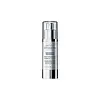What's inside
What's inside
 Key Ingredients
Key Ingredients

 Benefits
Benefits

 Concerns
Concerns

 Ingredients Side-by-side
Ingredients Side-by-side

Water
Skin ConditioningGlycerin
HumectantDimethicone
EmollientCaprylic/Capric Triglyceride
MaskingSodium Polyacrylate
AbsorbentTocopheryl Acetate
AntioxidantMannitol
HumectantPropylene Glycol
HumectantCyclopentasiloxane
EmollientPhenoxyethanol
PreservativeButylene Glycol
HumectantChlorphenesin
AntimicrobialFomes Officinalis Extract
Skin ProtectingTrideceth-6
EmulsifyingCreatine
Skin ConditioningDisodium EDTA
Sodium Hyaluronate
HumectantLaminaria Ochroleuca Extract
Skin ConditioningPEG/PPG-18/18 Dimethicone
EmulsifyingSodium Hydroxide
BufferingLaminaria Saccharina Extract
Skin ProtectingRhamnose
HumectantCarnosine
Skin ConditioningDisodium Adenosine Triphosphate
Skin ConditioningMethylparaben
PreservativeLaminaria Digitata Extract
Skin ProtectingAlcohol
AntimicrobialPEG-40 Hydrogenated Castor Oil
EmulsifyingAcetyl Tetrapeptide-9
Skin ConditioningPolysorbate 80
EmulsifyingPlankton Extract
Skin ConditioningPropylparaben
PreservativeLecithin
EmollientPentylene Glycol
Skin ConditioningSuperoxide Dismutase
AntioxidantTromethamine
BufferingSoy Isoflavones
Skin ConditioningWater, Glycerin, Dimethicone, Caprylic/Capric Triglyceride, Sodium Polyacrylate, Tocopheryl Acetate, Mannitol, Propylene Glycol, Cyclopentasiloxane, Phenoxyethanol, Butylene Glycol, Chlorphenesin, Fomes Officinalis Extract, Trideceth-6, Creatine, Disodium EDTA, Sodium Hyaluronate, Laminaria Ochroleuca Extract, PEG/PPG-18/18 Dimethicone, Sodium Hydroxide, Laminaria Saccharina Extract, Rhamnose, Carnosine, Disodium Adenosine Triphosphate, Methylparaben, Laminaria Digitata Extract, Alcohol, PEG-40 Hydrogenated Castor Oil, Acetyl Tetrapeptide-9, Polysorbate 80, Plankton Extract, Propylparaben, Lecithin, Pentylene Glycol, Superoxide Dismutase, Tromethamine, Soy Isoflavones
Ingredients Explained
These ingredients are found in both products.
Ingredients higher up in an ingredient list are typically present in a larger amount.
Carnosine is a dipeptide made from two amino acids.
This ingredient helps:
Glycation is the process of sugars binding to and damaging proteins. Too much sugar in our skin can lead to damaged collagen, contributing to factors of aging.
Carnosine is water-soluble and is not able to travel deeper layers of skin. This leads to some doubt about whether it can boost collagen in skin, since collagen is located in the deeper layers of skin.
Fun fact: Carnosine can be naturally found in our muscles and brain.
Learn more about CarnosineWe don't have a description for Disodium Adenosine Triphosphate yet.
Laminaria Digitata Extract comes from the dark brown seaweed, Laminaria Digitata. It is a potent antioxidant, which also provides soothing and hydrating benefits.
Many studies show the antioxidant components of Laminaria Digitata to help with anti-inflammation.
This ingredient is rich in amino acids, proteins, sugars, and vitamins. Small amounts of minerals such as phosphorous, iron, potassium, and copper are also found the seaweed.
These components help hydrate and nourish your skin's natural barrier. Having a healthy skin barrier leads to more youthful looking skin and may help reduce the signs of aging.
Laminaria Digitata is found in the northern Atlantic Ocean.
What's the difference between algae and seaweed?
Algae is a broad term that includes seaweed. Not all algae is seaweed.
Methylparaben is a preservative and is a paraben. It is used to prevent the growth of fungus, mold, and other harmful bacteria. Parabens are chemicals used as preservatives in both cosmetics and food.
Methylparaben can be synthetically created. It can also be found naturally in some fruits, such as blueberries.
Oftentimes, Methylparaben is combined with other parabens to help increase the shelf life.
The safety of Methylparaben is currently being studied. While ongoing studies are looking into the safety of parabens, the results have been very mixed. Some studies have not found Methylparaben to be harmful.
Learn more about MethylparabenPropylene Glycol is an odorless, colorless liquid. As a humectant, it helps skin retain moisture. It also aids in delivering active ingredients.
Another role of this ingredient is preventing a product from melting or freezing. Propylene glycol also adds antimicrobrial properties to a product, elongating product lifespan.
This ingredient is considered an organic alcohol and commonly added into both cosmetics and foods.
Those with sensitive skin or conditions may develop a rash when using this ingredient.
Learn more about Propylene GlycolPropylparaben is a preservative and is a paraben with antifungal and antimicrobial properties.
This ingredient can be naturally found in plants and insects, but most of it is synthetically manufactured for human use. In cosmetics, it is usually created by reacting para-aminobenzoic acid and propanol (an alcohol).
You can usually find this ingredient in water-based products.
Parabens have come under controversy due to the claim they are hormone disruptors. Studies show conflicting results. We recommend speaking with a professional if you have any concerns.
Propylparaben is commonly found in food, medicine, and cosmetics.
Learn more about PropylparabenWater. It's the most common cosmetic ingredient of all. You'll usually see it at the top of ingredient lists, meaning that it makes up the largest part of the product.
So why is it so popular? Water most often acts as a solvent - this means that it helps dissolve other ingredients into the formulation.
You'll also recognize water as that liquid we all need to stay alive. If you see this, drink a glass of water. Stay hydrated!
Learn more about Water